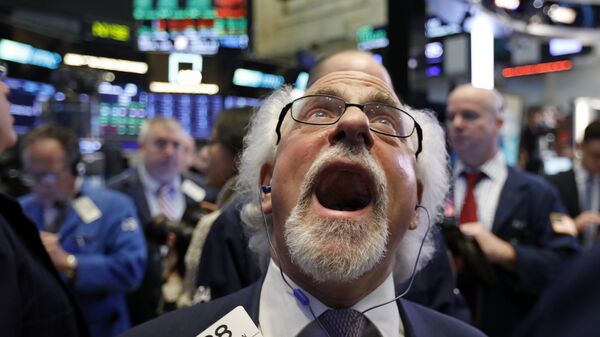The New York Stock Exchange (NYSE) closed the day with the DJIA index 2,352.60 points in the red, and the S&P 500 and the Nasdaq Composite saw 260.74 and 750.25 point losses, respectively. The Dow marked its worst drop since the 1987 Black Monday market crash which saw stocks plummet by more than 22%.
The day’s closing figures add to previous, 1,000-plus-point losses traders experienced on the trading floor earlier in the week, which marked the end of the 11-year bull market.
Now entering a bear market, defined as a drop of 20% from a recent peak, the NYSE saw trading halted for a period of 15 minutes for the second time this week after an initial 7% drop in figures triggered circuit breakers moments after trading was opened Thursday.
“Just like Monday, we’re giving the market 15 minutes [to] process the down movement,” Stacey Cunningham, the president of the NYSE, told CNBC. “It’s working as it’s designed to function so that the market can absorb what news was out overnight, how investors are reacting so they can make decisions and everyone gets a chance to see what’s happening.”
A bear market could be short-lived in the event that governments are able to clamp down on the spread of the novel coronavirus in their respective countries, allowing for an eventual improvement to global economic supply lines. MarketWatch reports that, on average, bear markets for the Dow have lasted roughly 206 trading days, whereas such periods have lasted about 146 days for the S&P 500.
Despite the gloomy outlook and plunging figures, Trump has stressed that markets are going to fare well in the coming days. “The markets are going to be just fine,” he stated as he prepared to greet Irish Prime Minister Leo Varadkar at the White House on Thursday.
The president’s remarks came hours after he addressed the nation late Wednesday to announce that he would be imposing a 30-day restriction on all travel by foreign nationals from Europe, except the UK, starting on Friday at 11:59 p.m. local time in a bid to get a handle on the COVID-19 virus. The announcement was not welcomed with open arms by the European Union, which subsequently voiced its disapproval of the move.
“We had to make a decision, and we didn’t want to take time,” Trump told reporters the following day from the Oval Office regarding travel restrictions.
Although the National Guard was deployed to New York to establish the US’ first containment zone, Trump later told reporters that he has not yet made a ruling on whether or not to enforce additional restrictions for travel within the US. Speaking on the US House of Representatives’ newest coronavirus relief package, Trump briefly noted that he does not support the measure. The House is expected to vote on its legislation Thursday.
At present, more than 120,000 COVID-19 cases have been confirmed globally, with more than 4,700 documented deaths, according to data collected by the Johns Hopkins University Center for Systems Science and Engineering. In the US, over 1,300 cases have been recorded, with at least 38 deaths.



